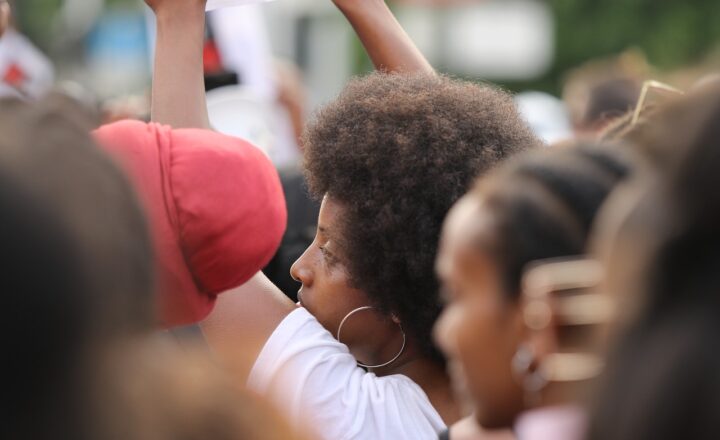
Riot control weapons are a vital component of maintaining public order during protests and civil disturbances. These tools, however, are not without controversy. The evolution of these weapons over the decades reflects not only advancements in technology but also shifting societal norms concerning civil rights, law enforcement practices, and government accountability.
1. Historical Context of Riot Control Weapons
Riots and civil unrest have plagued societies for centuries, prompting authorities to devise methods to restore order. Historically, these methods ranged from rudimentary crowd dispersion tactics to the development of specialized weapons and tools. In the early days, law enforcement used batons, shields, and even live ammunition for crowd control. However, as the repercussions of using deadly force became evident, the focus shifted toward less-lethal options.
In the wake of the civil rights movement, there was a notable increase in technologies designed for crowd control. The introduction of tear gas during World War I laid the groundwork for its use in domestic situations, particularly during protests advocating for civil rights in the 1960s. As frustration grew over the use of excessive violence by police, the demand for non-violent means led to further innovations.
2. The Development of Less-Lethal Weapons
The term “less-lethal” has become synonymous with many modern riot control weapons, an evolution driven by the need to minimize fatalities and severe injuries. Today’s riot control arsenal often includes:
- Pepper Spray: A widely used chemical irritant that causes temporary blindness and intense discomfort, incapacitating individuals without lasting harm.
- Rubber Bullets: Designed to incapacitate by causing pain, these projectiles have nonetheless led to serious injuries and fatalities, raising concerns about their use in crowd control situations.
- Sound Cannons (LRADs): Long Range Acoustic Devices emit loud sounds intended to disperse crowds, but their application has been criticized for causing hearing damage and psychological distress.
- Water Cannons: Often used in protest situations, these devices can be effective for dispersal but raise ethical questions when employed against peaceful demonstrators.
Although these advancements aimed at reducing fatalities, the use of any form of force in controlling civil disturbances raises substantive ethical and civil rights questions.
3. Impact on Civil Rights
The deployment of riot control weapons has far-reaching implications for civil rights, particularly concerning the right to peacefully assemble, express dissent, and seek redress from the government.
Historically, the overzealous use of force against protesters has led to tragic consequences. For example, the Kent State shootings in 1970 ignited outrage and propelled the anti-war movement, emphasizing the need for accountability and reform in law enforcement practices. In recent years, high-profile incidents like the protests surrounding the Black Lives Matter movement have spotlighted law enforcement’s use of riot control weapons against citizens exercising their First Amendment rights.
Modern debates around riot control weapons often center on:
- Excessive Force: Critics argue that the reliance on these tools can easily lead to scenarios where excessive force is justified, undermining civil liberties.
- Breach of Trust: The perception that law enforcement views demonstrators as adversaries can erode community trust, leading to further unrest and division.
- Lack of Oversight: The lack of transparent guidelines controlling the use of riot control weapons raises concerns about accountability and civil rights violations, particularly when disproportionately applied to marginalized groups.
4. Shifts in Policy and Public Perception
Amid growing awareness of the impact of riot control weapons on civil rights, many organizations and activism groups have risen to challenge their usage. Recent years have seen calls for reform in the ways police handle protests, stemming from public fear about the potential for violence.
In the United States, several cities have imposed moratoriums on the use of specific riot control weapons, particularly rubber bullets and tear gas, leading to discussions about alternative methods for crowd management that prioritize de-escalation rather than violence. Examples of these alternatives include:
- Community Policing: Encouraging police officers to engage with local communities, fostering trust, and providing a platform for open dialogue during protests before resorting to force.
- De-escalation Training: Training police officers in techniques for diffusing high-tension situations or conflicts, reducing the need for forceful methods.
Public perception of riot control weapons continues to evolve, often swayed by media coverage and grassroots movements advocating for systemic changes. Advocacy for civil rights and safety during protests remains a primary concern within law enforcement agencies and communities alike.
5. Future Implications
As technology continues to advance, the development of new types of riot control weapons will likely persist, raising questions about their impact on civil rights and public safety. Innovations such as drones for surveillance and smart munitions introduce both capabilities and ethical considerations.
New policies must be crafted to ensure that any implemented technologies do not infringe upon citizens’ rights to assemble freely and express dissent. There must be careful monitoring and evaluation to strike a balance between public safety and civil liberties.
In conclusion, the evolution of riot control weapons reflects societal changes, technological advancements, and ongoing struggles for civil rights. The dialogue surrounding their use—and their implications for a democratic society—must continue as communities demand accountability and transparency in law enforcement practices.
Conclusion
Understanding the complex history of riot control weapons provides a critical lens through which to evaluate their current use and future implications. As communities grapple with issues of law enforcement tactics and civil rights, it is essential to recognize that the evolution of riot control weapons is not merely about technology but about the very fabric of a democratic society. A balance must be struck between maintaining public order and protecting individuals’ rights, ensuring that history does not repeat itself as societies navigate their paths forward in an increasingly polarized world.







